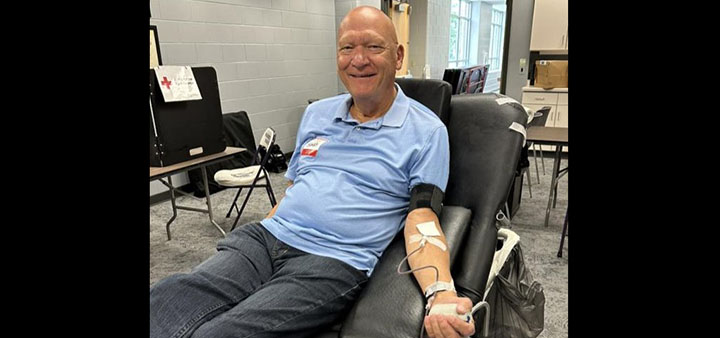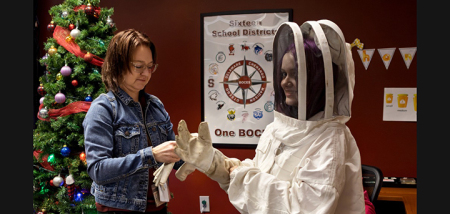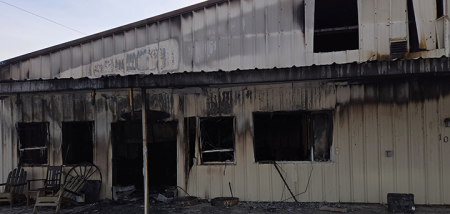Red Cross Facing Emergency Blood Shortage
Published:
July 29th, 2025
By:
Sarah Genter
 Area residents are encouraged to give whole blood or Power Red donations at one of the upcoming American Red Cross blood drives in Chenango County. Currently, the Red Cross is most in need of Type O blood. (Photo from the American Red Cross Blood Donors Facebook page)
Area residents are encouraged to give whole blood or Power Red donations at one of the upcoming American Red Cross blood drives in Chenango County. Currently, the Red Cross is most in need of Type O blood. (Photo from the American Red Cross Blood Donors Facebook page)
CHENANGO COUNTY — The American Red Cross is currently facing an emergency shortage of Type O blood, and are urging individuals to consider donating.
According to the Red Cross, Type O blood is the most needed, as O-positive blood is the most common blood type, with approximately 37 percent of the population with this type.
O-negative is also in high demand is it is the only universal red cell donor, and the most often used blood type in emergencies. With only 7 percent of the population having O-negative blood, it is also one of the rarer blood types.
Other rare blood types include A-negative, B-negative, AB-positive, and AB-negative.
While there is an increased need of Type O blood, individuals with any blood type can help save lives by donating at one of the upcoming American Red Cross blood drives in Chenango County.
Two types of donation are available at local Red Cross blood drives: whole blood and Power Red. According to the American Red Cross, "Whole blood is the most flexible type of donation. It can be transfused in its original form, or used to help multiple people when separated into its specific components of red cells, plasma and platelets."
Whole blood is often used to help treat trauma patients and individuals undergoing surgery. Donation takes about an hour, and is ideal for all blood types.
Power Red donation involves giving a concentrated dose of red blood cells.
"This type of donation uses an automated process that separates your red blood cells from the other blood components, and then safely and comfortably returns your plasma and platelets to you," states the American Red Cross.
Power Red donations take about an hour and a half, and are ideal for O-positive, O-negative, A-negative, and B-negative blood types. These donations help to treat trauma patients, newborns with emergency transfusions during birth, individuals with sickle cell anemia, and anyone suffering from blood loss.
Before donating blood, the American Red Cross recommends making an appointment, and download the Blood Donor app to receive appointment reminders and set up a RapidPass to expedite donation.
Donors are also encouraged to eat iron-rich foods the day before donation, get a good night's sleep the night before donation, eat healthy foods, and drink extra liquids.
On the day of donation, the American Red Cross recommends drinking an extra 16 ounces of water or other non-alcoholic beverage before donating, and eating a healthy meal and avoiding fatty foods.
To make blood donation more comfortable, donors should also wear a shirt with sleeves that can roll up above the elbow, let volunteers know if they have a preferred arm or vein to draw blood, and relax during their donation by listening to music, reading, or talking to other donors.
Blood donors can also use Applied Muscle Tension (AMT) to make their donation more comfortable. The American Red Cross says AMT is "a series of simple exercises that help your blood pressure stay up and improve blood flow, so your chance of experiencing any side effects, like fainting, stays low. These exercises can be performed throughout your donation and afterwards in the refreshment area."
After donating blood, individuals can relax in the refreshment and recovery area, where snacks will be provided. The American Red Cross also advises donors to drink four extra eight-ounce glasses of liquids and avoid alcohol over the next 24 hours after donation.
Additionally, after donating blood, avoid vigorous exercise or heavy lifting for the rest of the day, and keep bandages on the blood draw site on for the next several hours. If bleeding occurs, the Red Cross advises to apply pressure and raise the arm straight up for 5 to 10 minutes, or until bleeding stops.
If donors experience any dizziness, they should immediately sit or lie down until the dizziness subsides, and avoid any activities that may cause dizziness or fainting over the next 24 hours.
Call 1-866-236-3276 after donating to report any additional health information, with any problems or concerns, or if medical care is needed after giving blood.
More information on donating blood, blood donor eligibility criteria, and upcoming blood drives can be found at RedCrossBlood.org.
Upcoming Chenango County blood drives:
Thursday, August 7 from 11:30 a.m. to 4:30 p.m. at the Guernsey Memorial Library, located at 3 Court Street in Norwich.
Wednesday, August 20 from 11:30 a.m. to 4:30 p.m. at the Sherburne Fire Department, located at 15 West State Street in Sherburne.
Thursday, August 21 from 11:30 a.m. to 4:30 p.m. at the Guernsey Memorial Library, located at 3 Court Street in Norwich.
Thursday, August 21 from noon to 4:30 p.m. at the South New Berlin Fire Department, located at 3519 State Highway 8 in South New Berlin.
Tuesday, August 26 from noon to 5 p.m. at the Achieve Envisions Norwich Campus, located at 27 Griffin Street in Norwich.
Author: Sarah Genter - More From This Author
Comments






